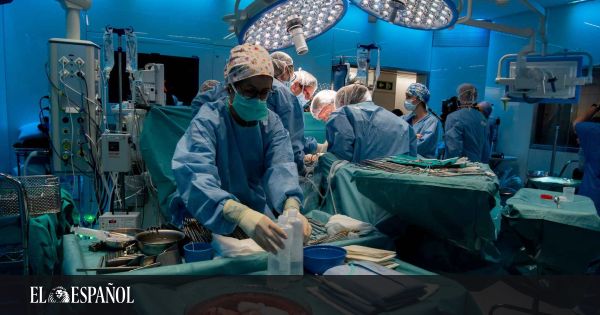
Related news
The Barcelona Clinical Hospital performed the first uterine transplant in Spain on October 5th. The procedure was possible thanks to the direct donation of the uterus from one sister to another. The intervention was led by the head of the Gynecology Service, Francisco Carmona, and the head of the Urology and Kidney Transplant Service, Antonio Alcaraz.
This process, which began five years ago, is part of the research project Feasibility study of a living donor uterus transplant procedure with obtaining the robotic transplant to validate the viability of this surgery.
The main requirement to be a candidate for this type of intervention is to have Rokitansky syndromeIn other words, a congenital disorder of the female reproductive system that affects 1 in 5,000 women in the world. These women are already born without a uterus and without a fallopian tube. In this case, the recipient was the only compatible candidate out of the 30 who applied.
An extremely complex process
Uterine transplantation is divided into two phases: removal of the uterus by robotic surgery, to be as invasive as possible and its implantation which consisted of open surgery. The approximate duration was about 12 hours, in terms of extraction, and about four hours for implantation.
A multidisciplinary team of over 20 people was tasked with carrying out the operation. Among them were professionals from different specialties: gynecologists, transplant surgeons, gynecology and transplant nurses, anesthetists and nursing assistants.
An extremely complex process, especially with regard to the first phase of extraction of the donor’s uterus. As Dr. Alcaraz explained, “it is a complex organ with poor vascularity of the arteries and a large network of veins from which the largest must be sought to drain the blood that reaches the uterus. “
To this is added that it is a long process over time from its success, as Dr. Carmona says “is determined by the viability of the organ, its functioning and the woman who becomes pregnant.”
Two months after surgery the evolution was good because it proved its functionality the recipient having the first menstrual cycle. In a few months, one of the 11 previously in vitro fertilized embryos will be implanted.
If she becomes pregnant, the recipient will be kept on immunosuppressive drugs until the second pregnancy. Once you have fulfilled your desire to be a mother, your uterus will be removed by laparoscopy after the second birth, as long as it is your desire to conceive.
To date, there have been about 70 uterine transplants worldwide, of which there are more than 20 live newborns. The first birth after a live donor uterus transplant took place in 2014 in Sweden at the University Hospital Sahlgrenska of the University of Gothenburg led by Mats Brännström.